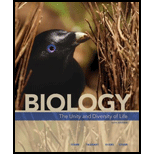
To determine: The number of treated children who showed an increase in the vertebral area during the 12-month period.
Introduction: Bones are the specialized connective tissues that surround the living cells. An adult consists of 206 bones in their body. The main functions of bone are storage of minerals, to aid in the movement, to protect the organs, and for producing the blood cells through the red marrow. Osteogenesis imperfecta is also known as brittle bone disease. It is a group of genetic disorders that can adversely affect the bones of our body. The main symptom of this disorder is easy breakage of bones. It is mainly caused due to the mutation in the collagen genes.
Explanation of Solution
Person T had multiple fractures in her legs and arms. At the age of six, she underwent a surgery in order to correct more than 200 bone fractures. Her brittle, easily breakable bones are a symptom of a genetic disorder called Osteogenesis imperfecta. It is caused due to the mutation in the collagen genes. During the development of bones, collagen forms a scaffold for the deposition of mineralized bone tissue. The development of scaffolds is inappropriately formed in children with Osteogenesis imperfecta.
Refer Fig. 35.10, “A clinical trial of a drug treatment for Osteogenesis imperfecta (OI)” in the textbook. The researchers had conducted clinical trials by testing a new drug for the treatment of Osteogenesis imperfecta. The clinical trial was carried out for a period of 12 months. They selected children under two years old. A comparison was also done between treated and untreated controls. The treated group contained nine children who were administered with the new drug and untreated group was the control group that contained six children. The vertebral area was also calculated before and afterward the treatment. The fractures that took place during the 12 months of the trial were also noted.
The number of treated children who showed an increase in the vertebral area after the 12-month period was nine. This is because all the treated children had a sudden increase in the vertebral area in cm2. For example, Child 3 initially had a vertebral area of about 6.7 and the final vertebral area was about 16.5. Also, the overall mean calculation was initially 11.4 and was increased to 14.9 after the treatment.
All the nine treated children showed an increase in the vertebral area after 12-month period of the study.
Want to see more full solutions like this?
Chapter 35 Solutions
Biology: The Unity and Diversity of Life (MindTap Course List)
- 22. Which of the following mutant proteins is expected to have a dominant negative effect when over- expressed in normal cells? a. mutant PI3-kinase that lacks the SH2 domain but retains the kinase function b. mutant Grb2 protein that cannot bind to RTK c. mutant RTK that lacks the extracellular domain d. mutant PDK that has the PH domain but lost the kinase function e. all of the abovearrow_forwardWhat is the label ?arrow_forwardCan you described the image? Can you explain the question as well their answer and how to get to an answer to an problem like this?arrow_forward
- Describe the principle of homeostasis.arrow_forwardExplain how the hormones of the glands listed below travel around the body to target organs and tissues : Pituitary gland Hypothalamus Thyroid Parathyroid Adrenal Pineal Pancreas(islets of langerhans) Gonads (testes and ovaries) Placentaarrow_forwardWhat are the functions of the hormones produced in the glands listed below: Pituitary gland Hypothalamus Thyroid Parathyroid Adrenal Pineal Pancreas(islets of langerhans) Gonads (testes and ovaries) Placentaarrow_forward
 Anatomy & PhysiologyBiologyISBN:9781938168130Author:Kelly A. Young, James A. Wise, Peter DeSaix, Dean H. Kruse, Brandon Poe, Eddie Johnson, Jody E. Johnson, Oksana Korol, J. Gordon Betts, Mark WomblePublisher:OpenStax College
Anatomy & PhysiologyBiologyISBN:9781938168130Author:Kelly A. Young, James A. Wise, Peter DeSaix, Dean H. Kruse, Brandon Poe, Eddie Johnson, Jody E. Johnson, Oksana Korol, J. Gordon Betts, Mark WomblePublisher:OpenStax College Biology 2eBiologyISBN:9781947172517Author:Matthew Douglas, Jung Choi, Mary Ann ClarkPublisher:OpenStax
Biology 2eBiologyISBN:9781947172517Author:Matthew Douglas, Jung Choi, Mary Ann ClarkPublisher:OpenStax Biology: The Unity and Diversity of Life (MindTap...BiologyISBN:9781337408332Author:Cecie Starr, Ralph Taggart, Christine Evers, Lisa StarrPublisher:Cengage Learning
Biology: The Unity and Diversity of Life (MindTap...BiologyISBN:9781337408332Author:Cecie Starr, Ralph Taggart, Christine Evers, Lisa StarrPublisher:Cengage Learning Biology: The Unity and Diversity of Life (MindTap...BiologyISBN:9781305073951Author:Cecie Starr, Ralph Taggart, Christine Evers, Lisa StarrPublisher:Cengage Learning
Biology: The Unity and Diversity of Life (MindTap...BiologyISBN:9781305073951Author:Cecie Starr, Ralph Taggart, Christine Evers, Lisa StarrPublisher:Cengage Learning Human Biology (MindTap Course List)BiologyISBN:9781305112100Author:Cecie Starr, Beverly McMillanPublisher:Cengage Learning
Human Biology (MindTap Course List)BiologyISBN:9781305112100Author:Cecie Starr, Beverly McMillanPublisher:Cengage Learning





